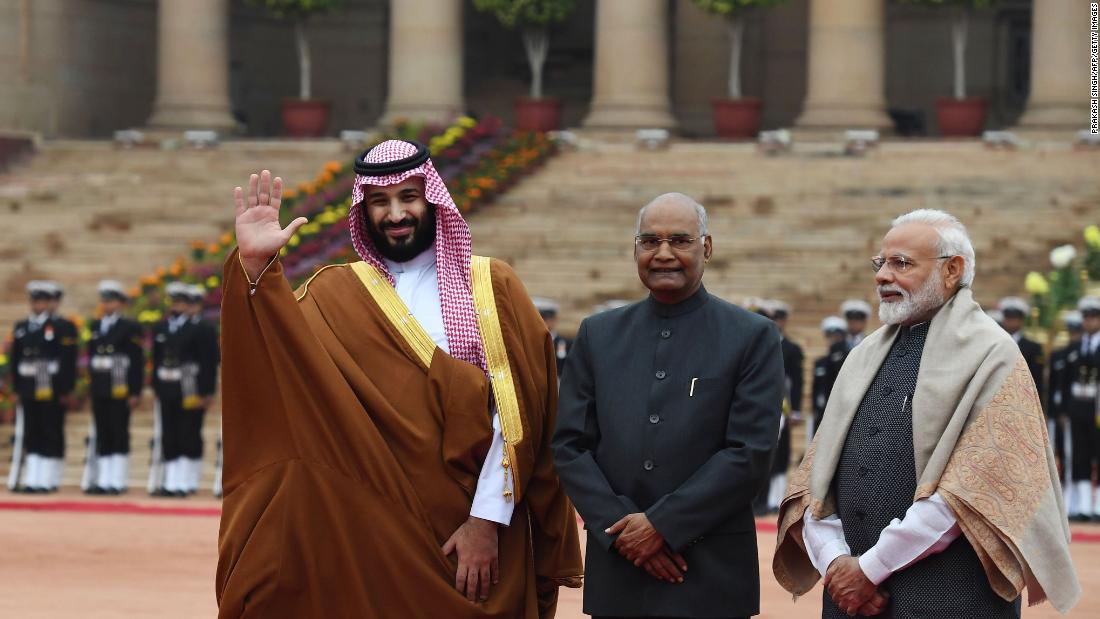
Saudi Arabian Crown Prince Mohammed bin Salman recently wrapped up a week of high-profile visits to Asia, touring Pakistan, India and China in a bid to court new allies. The Saudis clearly mean to signal to the United States and the West that they have options, as the kingdom endures a tarnished reputation over the killing of journalist Jamal Khashoggi. But anticipation of a full-blown Saudi pivot to Asia — and a turning away from the United States — is misguided. Cooperation between the kingdom and Asia is growing, but at best, relations with Asian countries can only complement US ties.
Mohammed bin Salman’s Asia tour, coming two years after his father’s historic month-long voyage through the region, saw the Saudis committing billions in investments at each stop. In Pakistan, Mohammed bin Salman signed agreements worth $20 billion, including a $10 billion deal for an oil refinery. In India, he identified $100 billion of opportunities, while agreements inked in China included a $10 billion refinery and petrochemicals deal.
The young royal’s outreach to Asia makes strategic sense. In addition to shoring up allies, there are several factors attracting the Saudis to Asia.
Politically, Asian states — with their own patchy domestic records — are less likely to push Saudi Arabia on sensitive issues that are perennial points of contention between Riyadh and western capitals, such as human rights abuses or support for radical Islamists. For instance, even though Pakistan-based terror group Jaish-e-Mohammed was outlawed in 2002, Pakistan has been criticized for not doing more to stop terrorist groups. China, meanwhile, has forcibly detained at least 800,000 members of Muslim minorities in “re-education camps” rife with allegations of torture.
It’s a tough time for trade. But emerging economies are moving ahead
Economically, Asian countries guzzle most of Saudi Arabia’s oil. Of the kingdom’s top five buyers, four are Asian countries, Middle East Economic Survey data shows, and China is on track to increase its Saudi imports this year. Asian markets and investments from the region are a crucial component of Vision 2030, Saudi Arabia’s economic reform initiative. Asia is a major target of Saudi Arabia’s diversification plans: State-owned Aramco is building a massive $44 billion refinery and petrochemicals complex in India, on top of the Pakistan and China refinery deals announced during the crown prince’s tour.
Despite the kingdom’s outreach, a full-fledged pivot to Asia is hardly imminent. For one thing, Asian countries’ commitments to the kingdom likely fall far short of what Saudi Arabia would like. Saudi Arabia and Iran have long been rivals, and Saudi Arabia would be hard-pressed to convince Asian states to take its side. Risk-averse Asian countries would likely have little appetite for entering the Middle East muddle and would much prefer continuing to do business with both countries. The United States, on the other hand, has a decades-long alignment with Saudi Arabia against Iran.
Even if Asian countries had the intent, they do not possess the capacity to replace the United States, particularly regarding military prowess. Saudi Arabia is certainly interested in Chinese military equipment, having purchased drones from Beijing and announcing its intent to build a domestic drone industry with Chinese help. But Washington is still the kingdom’s top weapons supplier, comprising 68% of Saudi arms imports between 2014 and 2018. Moreover, Saudi Arabia will find it tough to integrate Chinese equipment with its American arsenal — it would run into major logistics and operations-related issues trying to integrate Chinese-made weapons into its American-based systems, particularly given its decades of usage and stockpiling of US systems.
Moreover, Asian militaries cannot substitute the US military’s regional presence or match its ability. China is muscling up abroad, having established its first overseas military base in Djibouti in 2017. But its forays are expeditionary in comparison to the United States’ built-up regional presence. The US has had one of its largest bases in the Middle East: The US Central Command has been in Qatar for over a decade, with its forward headquarters at Al Udeid — which Qatar is now expanding and hoping to make permanent.
Economically, Asia cannot replace the US market for the Saudis. China might be the kingdom’s largest trading partner, having imported $46 billion from the kingdom last year, but Riyadh’s $45.6 billion in 2017 two-way trade with Washington is substantial. On top of that, it owns our country’s largest refinery in Texas.
Mohammed bin Salman’s tech diversification push will need the knowledge and expertise of Silicon Valley. Tech is a central component of Vision 2030, with emphasis on building a digital infrastructure and expanding into e-commerce, migrating government services online, and increasing investments in emerging technologies. The Public Investment Fund, Saudi Arabia’s sovereign wealth fund, is the main vehicle undertaking Mohammed bin Salman’s tech drive via its ownership of a slew of stakes in top-tier Western companies including Uber, Tesla and electric car maker Lucid Motors. The fund is even planning on opening offices in New York, London and San Francisco. On top of its direct investments, PIF has funneled billions more into US-based startups, including Slack, WeWork and DoorDash through its joint venture with Japan’s SoftBank, the SoftBank Vision Fund, to which it contributed $45 billion.
These dynamics could change over time, as US retrenchment from the region might not be a reversible phenomenon. The kingdom is not likely to pull back on its outreach to Asia. But Asian countries are not an imminent replacement to Washington in the kingdom’s foreign relations. Riyadh will still need the West.
Read more: www.cnn.com






![[Video] How to get rid of bed bugs in Toronto](https://www.thehowtozone.com/wp-content/uploads/2019/10/maxresdefault-2-100x70.jpg)


